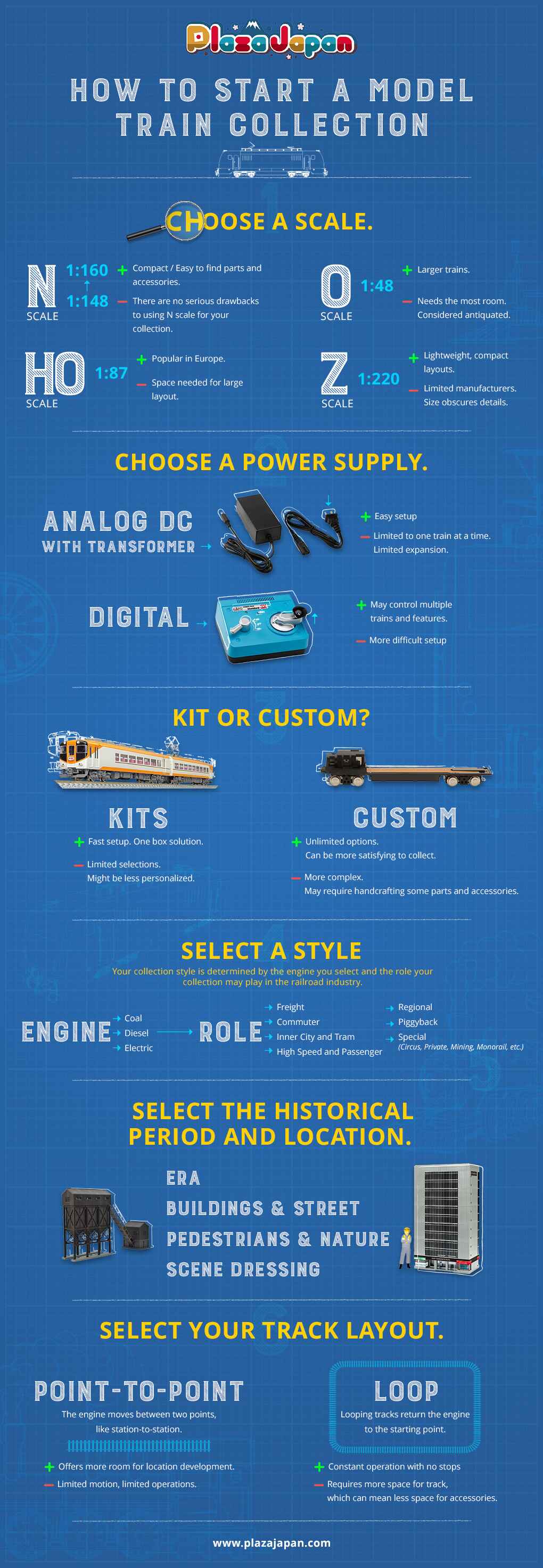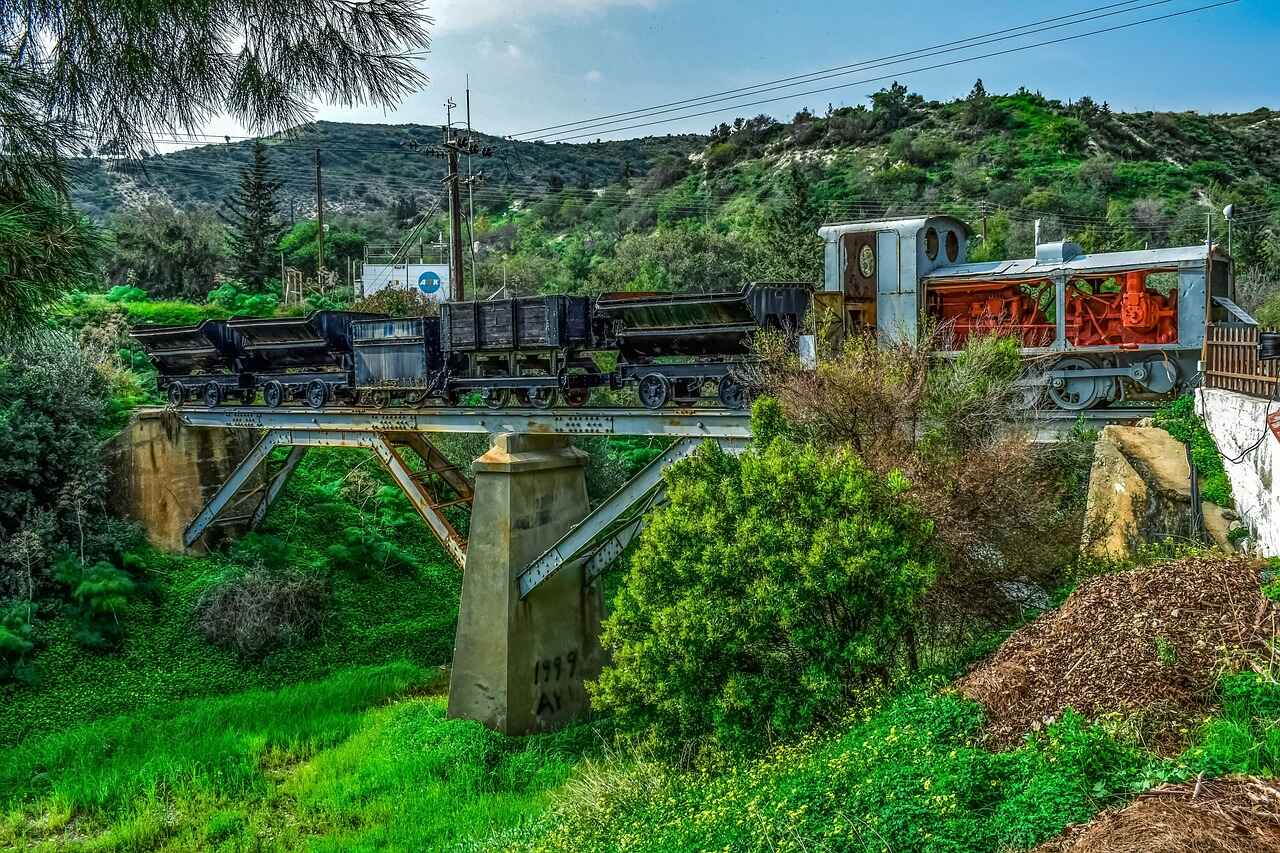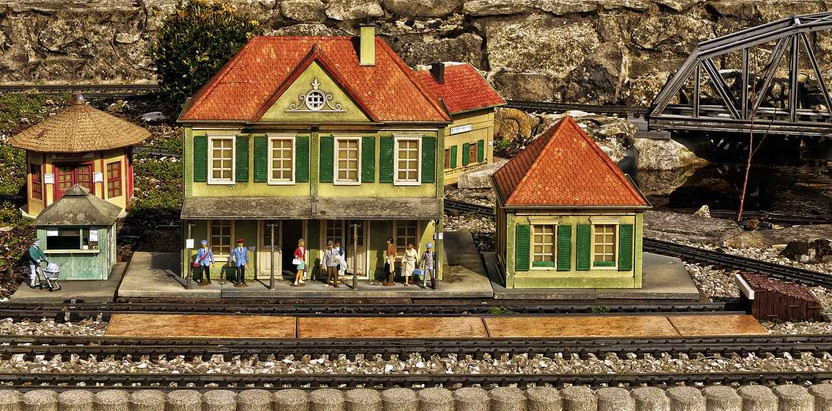The Guide To Model Train Collection For Beginners
May 31, 2023
Trains are fascinating, and collecting model trains sparks a lifelong interest in locomotives, engineering, and related pursuits. Train enthusiasts find creating track layouts, building cars, and researching locomotive history satisfying and relaxing.
If you’re wondering how to get started in model railroading, follow this guide. It will help explain model trains for beginners, and what to look for when starting your collection of trains and track layouts.
Table of Contents
- Introduction To Model Train Collections
- Step 1 - Understand Scale
- Step 2 - Understand Power Systems
- Step 3 - Kit Or Custom?
- Step 4 - Select A Style
- Step 5 - Select A Period/Location
- Step 6 - Select A Track Layout
- Enjoy Model Trains
Introduction to Model Train Collections
Today’s model railroad collectors have many options. For beginners, the large number of choices can feel daunting. Depending on your level of interest, you can build just about anything.
The following steps present important topics you should understand if you want to get started in the world of model railroading. They don’t have to be completed in this order. Depending on your collection, some steps may matter more than others. Your first consideration, however, will probably be how big you want your collection to be. Fortunately, railroad models and accessories are available in several sizes or scales.

Step 1 - Understand Scale
The first thing to learn about model railroading is scale.
Scale refers to the size of your model compared to the size of the original. For example, if a 1-foot tall model represented a 100-foot tree, the scale of the model may be expressed as 1:100, where 1 unit of measurement on the model equals 100 units on the original.
For practical reasons, four scales are the most common for model train collections. These scales are N Scale, O Scale, HO Scale, and Z scale.
N Scale is particularly small. The ratio is between 1:148 and 1:160, depending on the country of origin. The rails are about 9mm apart. This scale is popular in Japan, where apartments tend to be very small, and other areas where space is restricted.
O Scale trains are manufactured at 1:48 scale. They are made by a variety of manufacturers, including Lionel. O Scale tracks are wide and stable and can be laid down with or without a foundation, which makes them good for bare floors and tabletops. The rails are spaced 31.75mm apart.
HO Scale is smaller than O Scale. Actually, it’s roughly half as small — “HO” stands for “Half O.” It may be the most common size for train collections in the United States. HO Scale is expressed as 1:87 and the rails are spaced about 16.5mm apart.
Even smaller is Z Scale. These models are built at a scale of 1:122, with 6.5mm between the rails. It is the smallest commercially available railroad model scale. Z Scale lets builders create complex layouts in a tiny space.
For beginners, model train scales can be confusing. The important thing to remember is parts won’t work together if they are built on a different scale. So for every model track you set up, pick one scale and stick with it.
Step 2 - Understand Power Systems
Functional model train collections need power. Most use a power supply consisting of a transformer and other electronic components to take 110-240V AC and convert it to 12V or 16V DC power, depending on the size of the train. That’s good for controlling one train at a time. Ones that come with Japanese plugs can be used internationally with a plug adapter.
Digital power systems can control multiple trains, switches, and more. They are not recommended for beginners.
Some model train collections feature hybrid power systems with analog and digital components.
Step 3 - Kit or Custom?
Some manufacturers specialize in model trains for beginners. They offer a complete set in one box.
Kits are a fast solution if you want to set up a train quickly. They are great for introducing model railroading to young fans.
While a kit in a box may answer the basic question of how to get started in model railroading, many find this option to be unsatisfying. They want a custom collection.
Model railroading has many things in common with miniature modeling, including tools and techniques, so custom builders can find plenty of parts to mix and match. Custom building is an aspect of this hobby that many enthusiasts find to be the most appealing feature of their model train collections.
Step 4 - Select A Style
Trains have a rich lineage. The major styles include the following:
- Coal, Diesel, or Electric
- Freight and Commuter
- Inner City and Tram
- High Speed and Passenger
- MagLev and Monorail
- Regional
- Piggyback
- Circus
- Personal
- Mining
Some of these trains may be very challenging to collect.
Step 5 - Select a Period and Location

For beginners, model train layouts that showcase a broad period of time may be the easiest to construct. The broader and more popular the time period, the easier it will be to find parts and accessories.
There is no reason to follow this rule with your model train collection, as long as you understand accessories may be difficult to find. If, for example, you’re wondering how to get started in model railroading with a steampunk edge, you may have to handcraft your stage dressing, accessories, and props.
Step 6 - Select a Track Layout
Functioning trains must run on tracks. Some collections have intricate track layouts with reverse loops, multiple structures, complex switching, and shunting puzzles. Even the most complex layout is a combination of two basic track patterns: point-to-point and loop.
Point-to-point layout allows your trains to move between two points. There is usually a station at each end. Sometimes there is a switch or a roundabout that can change the train direction.
Loop layout, or continuous loop, provides a continuous path for your trains. Ovals and round layouts are the most common in commercial kits.
Track layouts designed by beginners for model trains are often simple and functional at first, and then become complex over time as their hobby grows. Some model train collections feature dozens or hundreds of switching elements, multiple stations, point-to-point movements, and multi-level loops.
Enjoy Model Trains
Let your imagination transport you into a miniaturized world of cargo, commuters, and travelers enjoying their day. Reflect on the array of steam, diesel, and electric engines. Whether you build a simple loop track layout or enter a build-off competition, you may find model train collections offer a creative outlet that is as satisfying as it is unique.
 JPY
JPY  Euros
Euros
 British Pounds
British Pounds
 Australia Dollars
Australia Dollars
 US Dollars
US Dollars
 Canada Dollars
Canada Dollars
 Chinese Yuan
Chinese Yuan
 Singapore Dollar
Singapore Dollar
 Hong Kong Dollar
Hong Kong Dollar


